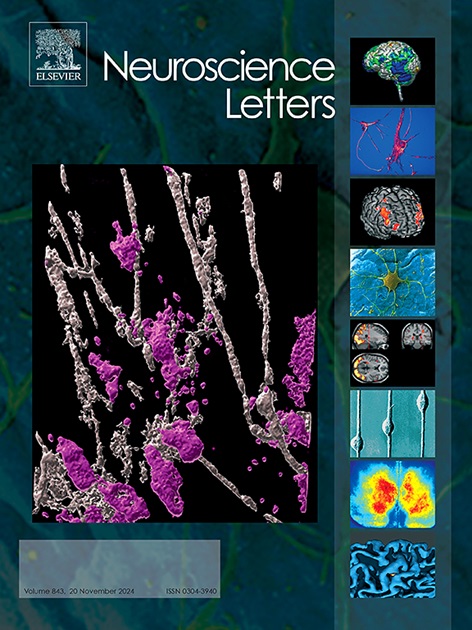绘制老化的大脑:从自由水校正的分数各向异性观察微结构变化。
IF 2.5
4区 医学
Q3 NEUROSCIENCES
引用次数: 0
摘要
大量磁共振成像(DTI)研究表明,衰老对大脑结构有显著影响。虽然这些研究揭示了不同大脑区域的分数各向异性(FA)的变化,但它们往往侧重于白质束和认知区域,往往忽略了灰质和运动区域。此外,传统的DTI指标可能会受到部分体积效应的影响。为了解决这些限制并更好地了解整个大脑的微结构变化,我们利用游离水校正分数各向异性(FAt)来检查20名年轻人(YA)和24名老年人(OA)的衰老相关微结构变化。体素分析显示,YA主要在与运动和非运动功能相关的白质束中具有较高的脂肪值。相比之下,OA主要在灰质区域显示较高水平的脂肪,包括皮层下和皮层运动区,以及枕叶和颞叶皮层。与这些横断面结果相辅相成的是,骨性关节炎组的相关分析显示,随着年龄的增长,许多这些变化进一步加剧,强调了这些微结构改变的进行性。总之,随着年龄的增长,灰质和白质中脂肪变化的不同模式表明了不同的潜在机制。虽然白质脂肪值下降,可能是由于轴突变性,灰质脂肪的增加可能反映代偿过程或病理改变。在未来的研究中纳入行为数据对于理解这些微结构灰质变化的功能含义及其对认知和运动功能的影响至关重要。本文章由计算机程序翻译,如有差异,请以英文原文为准。
Mapping the aging brain: Insights into microstructural changes from free water-corrected fractional anisotropy
Aging has a significant impact on brain structure, demonstrated by numerous MRI studies using diffusion tensor imaging (DTI). While these studies reveal changes in fractional anisotropy (FA) across different brain regions, they tend to focus on white matter tracts and cognitive regions, often overlooking gray matter and motor areas. Additionally, traditional DTI metrics can be affected by partial volume effects. To address these limitations and gain a better understanding of microstructural changes across the whole brain, we utilized free water-corrected fractional anisotropy (FAt) to examine aging-related microstructural changes in a group of 20 young adults (YA) and 24 older adults (OA). A voxel-wise analysis revealed that YA had higher FAt values predominantly in white matter tracts associated with both motor and non-motor functions. In contrast, OA showed higher levels of FAt primarily in gray matter regions, including both subcortical and cortical motor areas, and occipital and temporal cortices. Complementing these cross-sectional results, correlation analyses within the OA group showed that many of these changes are further exacerbated with increasing age, underscoring the progressive nature of these microstructural alterations. In summary, the distinct patterns of FAt changes in gray versus white matter with aging suggest different underlying mechanisms. While white matter FAt values decrease, likely due to axonal degeneration, the increase in gray matter FAt could reflect either compensatory processes or pathological changes. Including behavioral data in future studies will be crucial for understanding the functional implications of these microstructural gray matter changes and their effects on cognitive and motor functions.
求助全文
通过发布文献求助,成功后即可免费获取论文全文。
去求助
来源期刊

Neuroscience Letters
医学-神经科学
CiteScore
5.20
自引率
0.00%
发文量
408
审稿时长
50 days
期刊介绍:
Neuroscience Letters is devoted to the rapid publication of short, high-quality papers of interest to the broad community of neuroscientists. Only papers which will make a significant addition to the literature in the field will be published. Papers in all areas of neuroscience - molecular, cellular, developmental, systems, behavioral and cognitive, as well as computational - will be considered for publication. Submission of laboratory investigations that shed light on disease mechanisms is encouraged. Special Issues, edited by Guest Editors to cover new and rapidly-moving areas, will include invited mini-reviews. Occasional mini-reviews in especially timely areas will be considered for publication, without invitation, outside of Special Issues; these un-solicited mini-reviews can be submitted without invitation but must be of very high quality. Clinical studies will also be published if they provide new information about organization or actions of the nervous system, or provide new insights into the neurobiology of disease. NSL does not publish case reports.
 求助内容:
求助内容: 应助结果提醒方式:
应助结果提醒方式:


